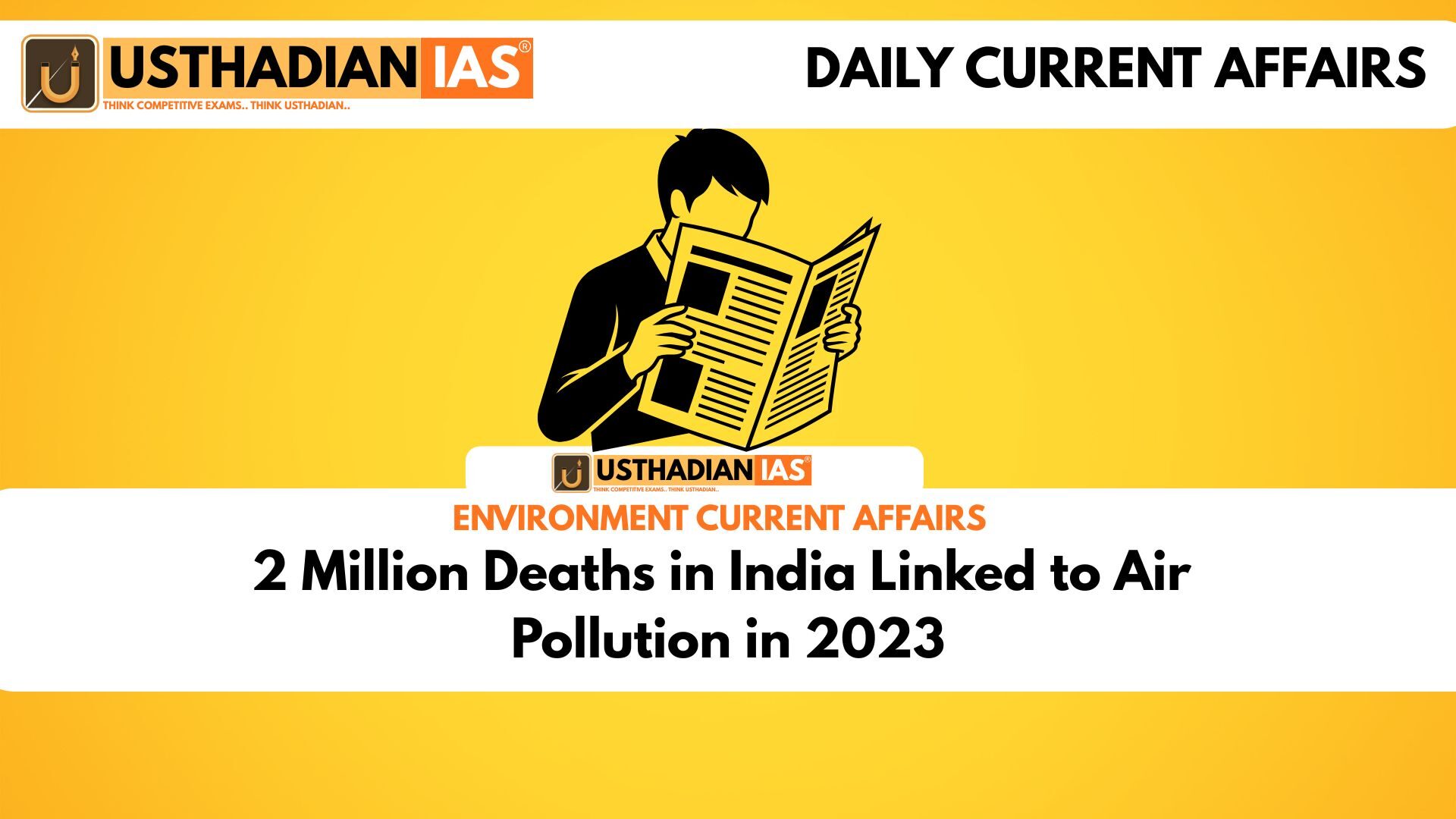Alarming death toll
2 Million Deaths in India Linked to Air Pollution in 2023: According to the State of Global Air 2025 (SoGA) report by Health Effects Institute (HEI) and Institute for Health Metrics and Evaluation (IHME), India recorded about 2 million deaths in 2023 due to air-pollution related diseases. The figure marks a roughly 43 % increase from about 1.4 million in 2000.
Static GK fact: India’s population in 2023 was over 1.4 billion (approximate).
Disease pattern shift
Nearly nine in ten of the deaths were caused by non-communicable diseases (NCDs) such as heart disease, lung cancer, diabetes and dementia. The report finds the air-pollution death rate in India at around 186 deaths per 100,000 people, compared to about 17 per 100,000 in high-income nations. States like Uttar Pradesh, Maharashtra, Rajasthan, Bihar and West Bengal each recorded over 100,000 deaths.
Static GK tip: NCDs now make up the majority of disease burden in India, replacing many infectious disease causes.
Key disease links
The report attributes:
- ~7 in 10 deaths from chronic obstructive pulmonary disease (COPD) to polluted air in India.
- ~1 in 3 lung-cancer deaths linked to air-pollution exposure.
- ~1 in 4 heart-disease deaths and ~1 in 5 diabetes deaths attributed to air pollution.
Among adults over 60 years globally, 95% of air-pollution deaths stem from NCDs. Household air-pollution deaths have dropped, but deaths from ambient PM2.5 and ozone have grown sharply.
Static GK fact: Fine particulate matter (PM2.5) is one of the key pollutants that penetrate deep into lungs and enter bloodstream.
Emerging dementia threat
A striking new finding in the SoGA 2025 report is the link between air pollution and dementia. Globally in 2023, air pollution contributed to 626,000 dementia deaths and 40 million healthy-life years lost. In India alone, over 54,000 dementia-related deaths were attributed to polluted air. Scientists warn that long-term exposure to PM2.5 can damage brain tissue and accelerate cognitive decline — an alarming issue given India’s ageing population and limited elderly care infrastructure.
Policy and action challenges
The burden of air-pollution-related deaths remains heavily concentrated in low- and middle-income countries (LMICs), with South Asia at the epicentre. Despite recognition by the World Health Organization (WHO) that air pollution is a leading risk factor for NCDs, progress has been slow. The SoGA report urges India to integrate clean-air strategies into health and development policies, linking environmental reform and healthcare planning.
Static GK tip: The WHO’s guideline annual mean for PM2.5 is 5 µg/m³; many Indian cities exceed this by an order of magnitude.
Outlook
If current trends continue, India may see further rise in chronic-disease burden tightly linked with air pollution. Tackling this requires cross-sector action — energy, transport, agriculture, health — and state-level focus, especially in high-burden states. Reforming emissions, improving monitoring, and aligning with national health targets are key.
Static Usthadian Current Affairs Table
2 Million Deaths in India Linked to Air Pollution in 2023:
| Topic | Detail |
| Annual deaths in India (2023) | ~2 million due to air pollution |
| Increase since 2000 | ~43 % rise from ~1.4 million |
| Death rate per 100,000 | ~186 in India vs ~17 in high-income countries |
| Share of deaths from NCDs | ~89 % |
| Major diseases linked | COPD (~70 %), lung cancer (~33 %), heart disease (~25 %), diabetes (~20 %) |
| Dementia deaths in India (2023) | > 54,000 attributed to air pollution |
| Key polluted states | Uttar Pradesh, Maharashtra, Rajasthan, Bihar, West Bengal (each >100,000 deaths) |
| Policy gap | Need for integrated clean air–health policies and better monitoring |








